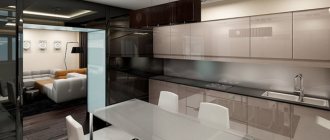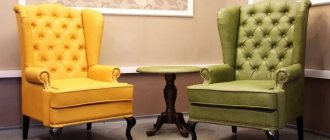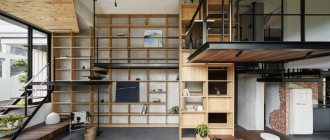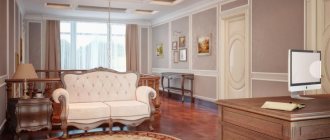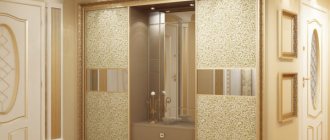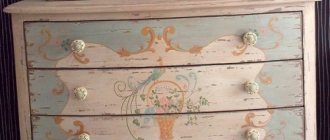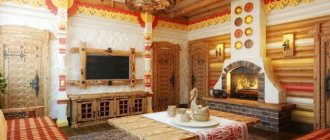Empire style is an art movement that was formed during the time of Napoleon and combined palace luxury and military pretentiousness. It is a sign of success and a symbol of power. Empire style in the interior is the final stage in the development of classicism.
Having become Emperor of France and conqueror of Europe, Napoleon Bonaparte decided to exalt his military and political successes by creating a new ceremonial style. In the architecture created, the grandeur of the empire materializes in majestic architectural buildings and massive structures. Not surprising, since “empire” is translated from French as empire. The Napoleonic era of the 19th century is fully reflected in the artistic and architectural style. Its theme is inseparable from triumphal and heroic motives; imperial ambitions are visible everywhere. These are rare weapons, expensive decoration of huge premises and symbols of a great empire.
How did the Empire style in the interior originate?
The direction elegantly combines elements of outstanding civilizations - Roman and Egyptian. The style became part of Napoleonic ideology and reflected the ideals of the revolution. The emperor’s ideas were implemented by Jacques-Louis David, an ardent supporter and court artist of the dictator. Interior, painting, furniture sketches - Jacques-Louis put his talented hand to everything.
An important role was played by archaeological excavations in the ancient Roman city of Pompeii, which were carried out just before the formation of the Napoleonic Empire. Before this, Europeans knew nothing about the daily life of the Romans; the discovery of archaeologists became a real sensation. During the excavations, pieces of furniture, interior decoration, lighting fixtures, jewelry and even dishes of the ancient Romans were revealed to the whole world. That is why the Empire style in interior design looks back to the Roman Republic. Roman motifs are beginning to be copied in Parisian salons. Napoleon's campaign in Egypt also affected the interior of the French aristocrat.
After Napoleon's Russian campaign, the movement gained popularity in Russia and existed until the 50s of the 19th century. The Russian style initially imitated the French, but soon acquired its own characteristic features.
Content
- 1 Brief description of the direction
- 2 Emergence and development of the direction 2.1 Periodization
- 2.2 Transition period
- 2.3 Decline of monumental classicism
- 3.1 Art Deco
How to determine the Empire architectural style
Distinctive features of the design are the correspondence of the decoration of the room to its architectural form. The design of the Napoleonic-style cottages was adjusted during the first stages of construction. Large rooms are complemented by architectural decorations and are adjacent to spacious enfilades (a long end-to-end row of rooms). Enlarged windows have the shape of arches, and large and wide window openings visually add monumentality and spaciousness to the room. Between the windows there are arches, columns and consoles.
You will not confuse Empire interior design with other areas of classicism thanks to:
- Mirrors located in the most unexpected places - above the bed, above the fireplace and even above the doors. In the bedrooms one could often see a full-length pasha mirror.
- Monumentality, which can be seen in furniture and sculptures. Heavy, massive furniture with many details are arranged symmetrically and complement each other. There are no empty spaces in the room.
- Textured walls made of oak panels (the modern Empire style in the interior specifically ages wooden panels to recreate that era). Tapestries or silk fabrics were used to decorate the walls. Today they can be replaced by plain vinyl wallpaper with a small pattern.
- The emergence of new interior items. Borrowing from Roman palaces, sofas with one armrest on which you could lean. Hand-carved display cases, secretaries and round tables on one wide support appear.
- Egyptian motifs, which can be traced in the interior along with the ancient heritage - furniture legs and armrests in the form of lion paws and lion heads, matte black bronze. Images of sphinxes, griffins, pharaoh masks, and obelisks are used. The Roman spirit makes itself felt through mythological scenes and military attributes, laurel wreaths and palm branches.
- Using one type of expensive wood. It could be walnut, olive, mahogany, but most often mahogany was used. Elite wood is necessarily complemented by gilding decorating pieces of furniture.
- Scarlet, sky blue, beige and green walls (but there were also pastel colors - blue, pistachio, lilac). The room was decorated in the same style, or using two contrasting shades. The walls were decorated with paintings, ornaments and bas-reliefs. It is important here not to confuse the Empire style ornament and Baroque interior elements. There are no ornate patterns in the rooms; the interior decor is a plexus of flowers.
The main rooms are not the formal bedrooms, but the office, the formal dining room, and the hall for the exhibition of works of art. The Empire style house will also surprise the visitor with a luxurious chandelier. It is imperative to use expensive fabrics for furniture upholstery - velvet, silk and velor in golden tones in combination with black, blue or light blue.
Harmony between the walls and ceiling is important - note designers working in the Empire style - the interior provides for smooth ceilings, but decorated with stucco.
Embroidery on fabric was done with gold and silver thread. The interior is also characterized by the use of complex decoration techniques - the use of bronze and gilded applied parts and sculptures. Even porcelain during the time of Napoleon changed its design - sets began to be decorated with golden palm branches.
Furniture Features
Furniture in the Empire style, the features of which determined its belonging specifically to this direction, borrows antique forms. Pilasters, columns, cornices, etc. again appear in the decorative elements. In the decoration of table surfaces there are griffins and sphinxes, caryatids and lion paws.
These are pompous, monumental products. The creative imagination of the authors was somewhat limited by prudence. However, the nobility preferred to strive to replicate the way of life of Ancient Rome. Interiors at this time began to be distinguished by theatricality, flashy decoration with pronounced imitation features.
The Empire style was clearly regulated. Local schools were simply absent at this time. This was expressed in some limitations of creative imagination and precise mathematical calculations. Symmetrical lines, balance and orderliness became the main features of the Empire style.
How did Empire style decor affect the architecture of the USSR?
Among the origins of the Russian Empire style is Carlo Rossi, who created grandiose ensembles from parks, streets and sculptural elements. National specificity can be seen in the active use of malachite and gilded bronze, serpentine, onyx, granite and diorite. Finishing stones were used in furniture, decorative vases, wall cladding, inlaying interior parts and columns.
To recreate the Empire style in a modern interior, today's craftsmen use the same technologies that were used by cabinetmakers in the 19th century.
It is not at all surprising that the direction returned to the USSR with the arrival of an authoritarian personality whose ambitions were not inferior to Napoleon. In the 30s of the 20th century, the Stalinist Empire style in architecture became widespread.
The Stalinist style is manifested in:
- herringbone floors
- wide ceiling cornices and
- dark walnut or oak furniture;
- high windows and bay windows;
- crystal chandeliers.
The interior is easy to recognize by the red carpets, beautifully arranged dishes in the buffet, candlesticks, vases, black and white photographs, and an abundance of silver and crystal. The interior in the Stalinist Empire style combines Baroque, Art Deco and classical Napoleonic styles. Columns, orders and pilasters were borrowed from Roman architecture. Later, elements of Eastern culture and Gothic began to be traced, which were viewed through the prism of Russian architectural traditions.
Folk furniture
Following the traditions of the heyday of the Empire style, craftsmen began to create not only expensive furniture for the nobility, but also relatively cheap products. At the same time, the main features of the style were preserved. The difference was in the materials used.
Representatives of the middle class could afford to buy inexpensive furniture in the Empire style. She was distinguished by her clumsiness, but in general her appearance corresponded to generally accepted canons.
To give the furniture luxury, it was actively decorated with bronze trim. For those who could not afford such decor, the craftsmen offered gilded papier-mâché, which imitated natural metal. This cheap material was also used to make eagle and lion paws. Furniture could also be decorated with swans, griffins, and atlases made of papier-mâché and gilding. There were also Egyptian motifs.
What place has the Empire style given to natural stone in the interior of an apartment?
Mainly natural stone can be seen on the floors. The floor covering is marble
.
But the Stalinist Empire style in architecture especially often uses granite for finishing floors in public buildings (in restrooms and toilets it was also used for wall cladding). Gray shades of granite are used to decorate the facades. For private houses, single-color marble was selected and laid evenly, imitating the stone floor in premises of the times of the Roman Empire.
Facades made of pre-treated facing stone are also characteristic. In the exterior there are granite wreaths and marble columns. Roman style features were visible in wall mosaics, marble baths, sinks and elegant countertops. Preference is given to marble, and, as a last resort, to rocks that are as close to it as possible. The color palette is varied - from white and black to nude, yellowish gold and emerald green.
Features of modern furniture
By choosing the right furniture for your living room in the Empire style, you can achieve a stunning effect. Antique luxury can be combined with modern design. At the same time, the interior turns out to be original, interesting and exciting.
Chairs in this style have low backs. Their shape is curved and their dimensions are impressive. The upholstery is made of genuine leather or expensive fabric. Couches and sofas are also covered with brocade, velvet or silk. Their backs are also low, but the seat is quite spacious. The frame is made of bronze or wood. The legs are decorated with various ornaments and antique images. Small pillows matching the color of the upholstery complete the composition.
The cabinets are of impressive size. They are created from heavy solid wood. Decorated with mirrors, gilding and elegant handles. The table can have a rectangular or round shape. The legs must have beautiful curves or antique figures. The beds are large in size and have a beautiful headboard. Sometimes canopies are used.
Having considered the features of furniture created in the Empire style, everyone will be able to create a luxurious, unusual interior in an apartment or private house.
Recreating the design
Where to start creating an original premises in Minsk? Photos of the finished design will help you recreate the Empire style in the interior. It is important to use natural wood and stone, while being mindful of the limited building materials and technologies of the 19th century. Don't be afraid to use bright colors - crimson, purple, blue and green.
A rectangular table with gold or silver inlay, a sofa made of dark shades of wood, complemented by bronze inserts, would be suitable. You can use teak, red (or ebony) wood, ebony. The walls are decorated with emblems, paintings or military coats of arms. Torches, eagles, and various medallions are appropriate. Don’t be afraid to go overboard with drapery, ruffles and flounces, and lamps with fabric lampshades. A good addition to the relief walls will be stucco cornices and picturesque lampshades. The Empire style in the bedroom interior is visible thanks to the canopy, large vases with drawings, and wall paintings.
There is a lot of light (the chandelier is complemented by lamps and additional lighting), a dressing table and a chair with sphinxes on the armrests. A small chest decorated with silver or gold will fit well into the interior. The Empire style in the interior of the apartment, photos of which are replete with Roman and Egyptian accessories, can be described in just three words - self-sufficiency, luxury and balance. This noble style conveys the spirit of the past through the attributes of antiquity and Egyptian culture, captivating with its calm and harmony. But if you want to recreate the style in Belarus, you should prepare for the high cost of design. Cheap fakes and imitations are not allowed here. If the curtains are silk, if the floor is stone or parquet, if the accessories are then only the most expensive.
Furniture items
Empire style furniture is emphatically comfortable. Both dark and light wood species are used for its manufacture. Moreover, there may be no divisions on the walls of the products completely. The most commonly used material is mahogany. It is decorated with bronze or gilding. The veneer is quite simple, but its execution is perfect. The furniture pieces were decorated with it. Smoothly polished black and red veneers were used.
Empire style cabinets are massive and monolithic. Their corners are sharp. The decor is symmetrically located on smooth shiny surfaces. The profile of straight cornices is not clearly expressed.
Many new designs are appearing in this style. These are, for example, a wall cabinet, a sideboard, a bookcase with a trellis, narrow display cases. Tables with round tops for serving are also appearing. For the seat, a form such as a recamier was developed. This is an elegant short daybed. It had a curved shape that resembles the neck of a goose.
Famous architects - representatives of the style
|
|
